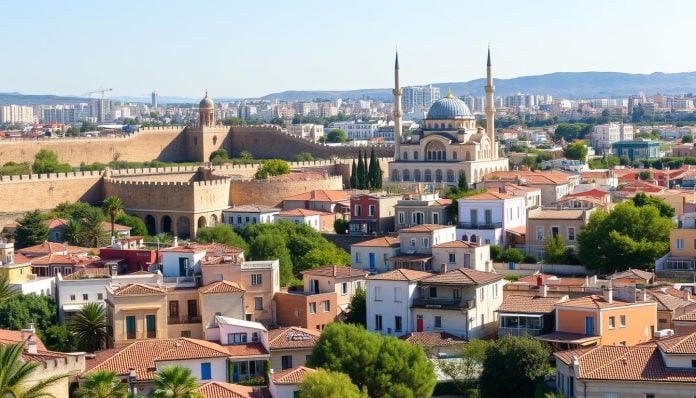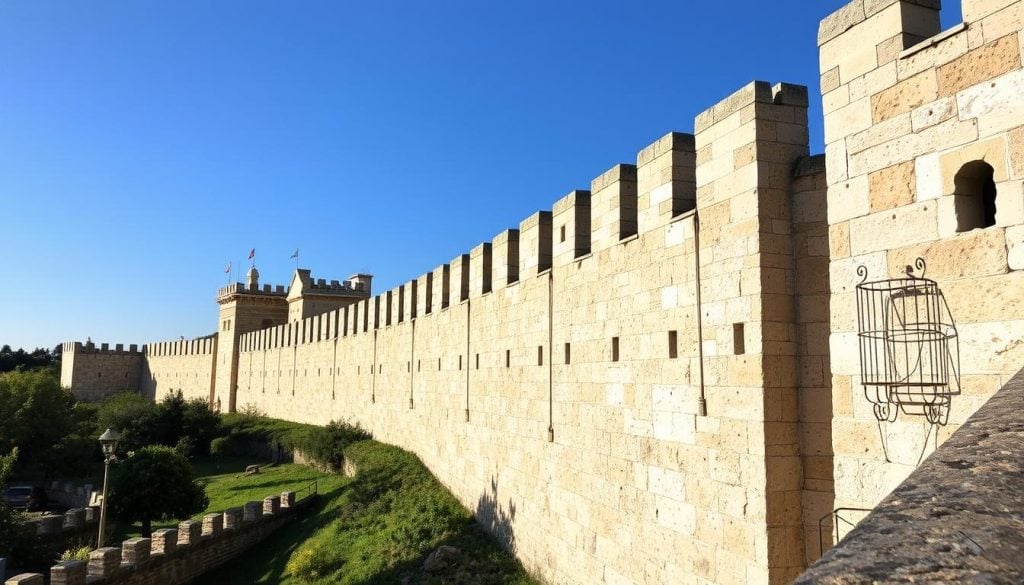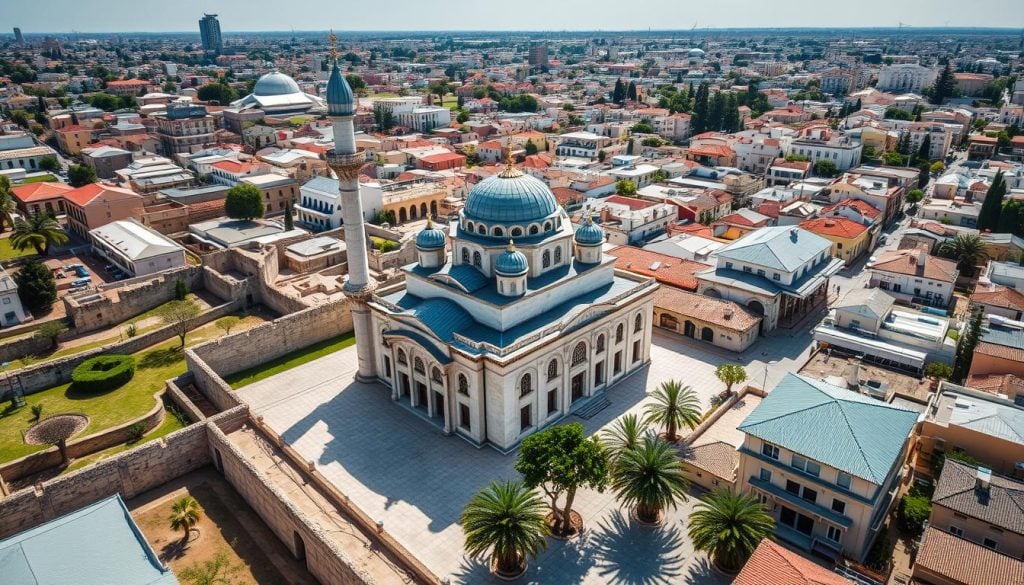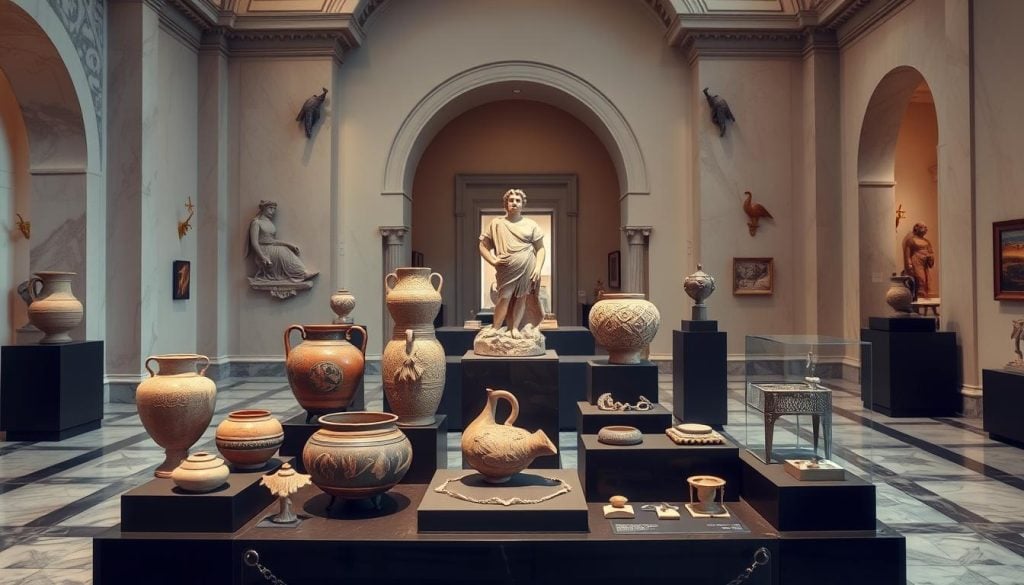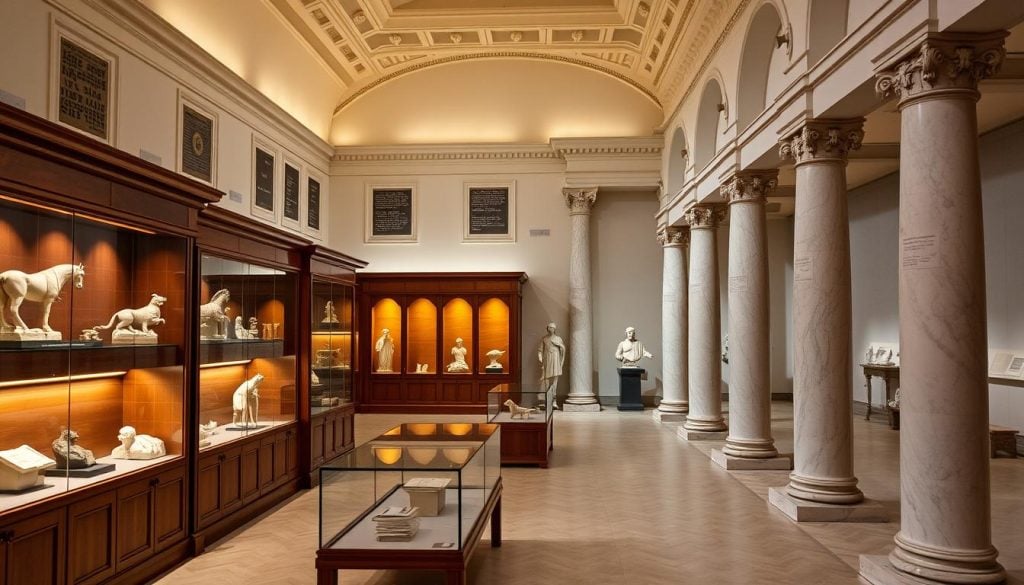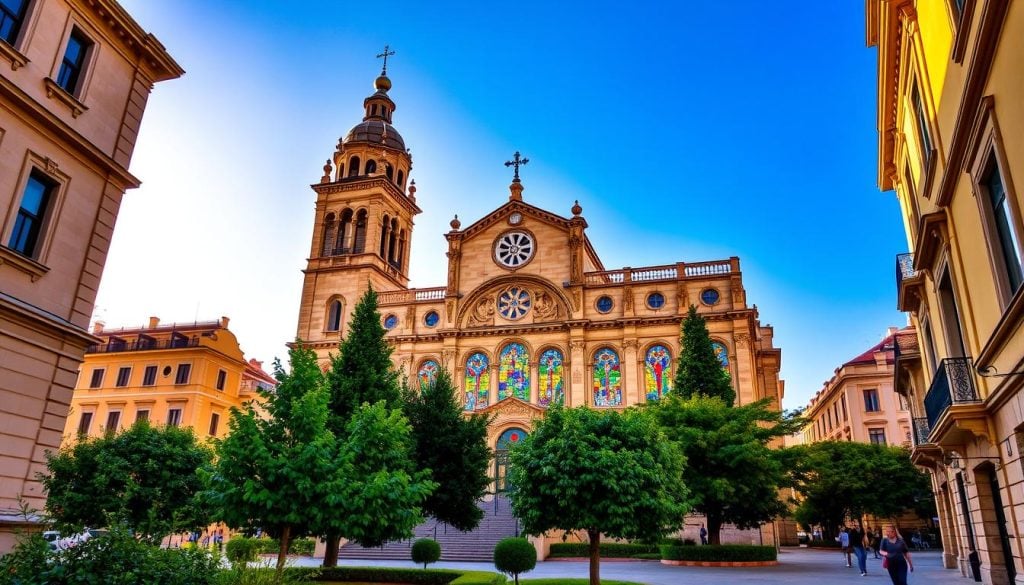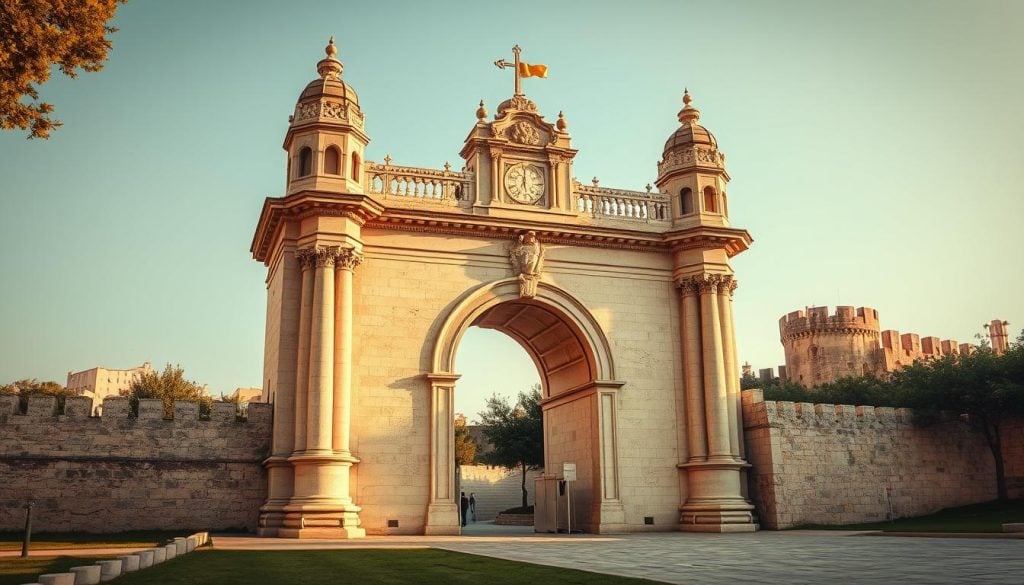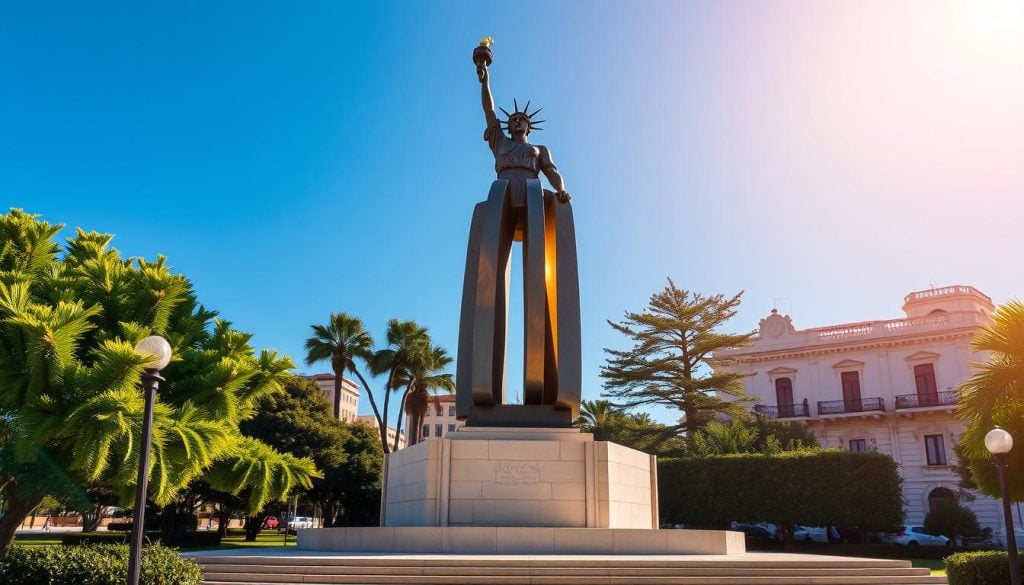Have you ever wondered about the stories hidden behind Nicosia’s ancient walls? This city, the last divided capital in Europe, has many historical sites waiting to be explored. You’ll find tales of intrigue, culture, and resilience in every corner.
From the captivating landmarks to the rich Cypriot heritage, there’s much to discover. As you explore, you’ll see how ancient and modern influences blend together. This unique mix shapes the identity of Nicosia, making it a remarkable destination.
The Walls of Nicosia
The Venetian walls of Nicosia are a symbol of the city’s rich history. Built in the 16th century, they were made to protect against Ottoman attacks. Despite changes during British rule, the walls remain well-preserved.
History and Structure
The walls show off clever architecture, built with local stone in a star shape. This design helped with defense and made it easier for troops to move around. The walls stretch about 4.5 kilometers, with towers and battlements for protection.
Exploring the walls, you’ll find stories of the past and the skill of the builders.
Significance of the Three Gates
The Nicosia gates, Famagusta, Pafos, and Kyrenia, are key parts of the walls. They were important for military access, showing the careful planning behind their creation.
- Famagusta Gate: Its stone carvings are a testament to the craftsmanship of the time.
- Pafos Gate: As the main entrance, it shows the military importance of Nicosia.
- Kyrenia Gate: Well-preserved, it gives a peek into the lives of soldiers and locals.
What historical sites should not be missed in Nicosia?
Nicosia, the capital of Cyprus, is full of history and culture. Visitors should see the city’s amazing historical sites. These sites show the city’s rich heritage.
Overview of Key Historical Sites
Check out landmarks that show Nicosia’s identity. Each site gives a peek into the city’s past. You’ll see ancient churches and museums that tell stories of old times.
The Venetian Walls are a highlight, showing the city’s defenses. You’ll also see beautiful churches and museums about Cypriot history.
Must-See Attractions for History Enthusiasts
Your Nicosia historical sites itinerary should include:
- Venetian Walls
- Famagusta Gate
- St. John’s Cathedral
- The Cyprus Museum
- Leventis Municipal Museum
Each site gives interesting insights into Nicosia’s history and culture. Spend time at these sites to dive deep into the city’s story.
| Historical Site | Significance | Location |
|---|---|---|
| Venetian Walls | Fortifications from the 16th century | Central Nicosia |
| Famagusta Gate | Cultural center and historical gateway | Near the Old City |
| St. John’s Cathedral | Historical church with stunning frescoes | Within the Old City |
| The Cyprus Museum | Displays Cypriot antiquities and history | Near the city center |
| Leventis Municipal Museum | Focuses on Nicosia’s urban culture | In the Old Town |
The Cyprus Museum (Archeological)
The Cyprus Museum is the largest in Cyprus. It gives us a peek into the island’s rich history from the Neolithic era to the early Byzantine period. You’ll see a vast collection of artifacts that show the island’s past.
These objects reveal daily life and highlight the island’s artistic achievements. It’s a treasure trove of Cypriot civilization.
Exhibits and Collections
The museum showcases a wide range of archaeological finds. You’ll see pottery, tools, and sculptures. Among the highlights is the statue of Aphrodite of Soloi, known for its beauty and importance.
Each exhibit offers a look into the lives, beliefs, and customs of ancient Cypriots. It’s a journey through time.
Importance of the Museum in Cypriot Culture
This museum is crucial for preserving Cyprus’s cultural heritage. It’s a go-to for researchers and students, offering educational programs. These programs help us understand Cypriot civilization better.
By displaying key pieces of history, the museum helps us appreciate Cyprus’s past. It’s a place of learning and discovery.
The Leventis Municipal Museum
The Leventis Municipal Museum is a great place to learn about Nicosia’s history. It shows how the city has changed over time with its many exhibits. It was started by the Nicosia Municipality and the Anastasios G. Leventis Foundation. This museum celebrates the rich culture of the area.
When you visit, you’ll see amazing exhibits that tell stories from different eras. You can see everything from ancient times to today. The museum is known for its educational programs. These help people understand Nicosia’s history better.
The museum has won many awards, including the European Museum of the Year in 1991. These awards show how important it is in keeping local history alive. They highlight the museum’s key role in preserving cultural heritage.
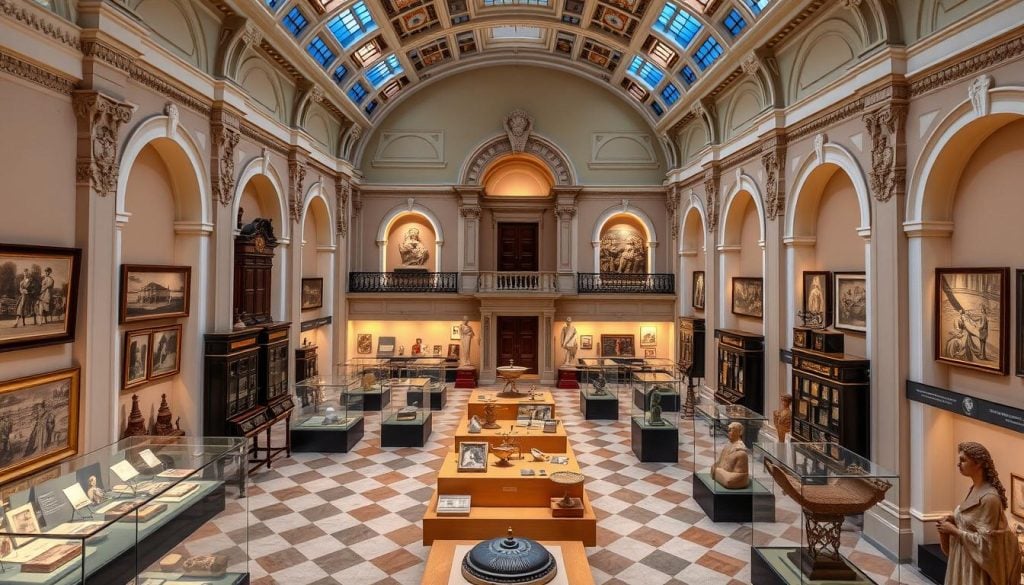
| Exhibition Type | Description |
|---|---|
| Historical Artifacts | A collection of items illustrating Nicosia’s past, from prehistoric times to the 20th century. |
| Guided Tours | Educational programs designed to help visitors understand the significance of various exhibits. |
| Temporary Exhibitions | Rotating displays that focus on specific themes or historical events related to Nicosia history. |
The Museums of the Pancyprian Gymnasium
Visiting the Pancyprian Gymnasium museums is a rewarding experience. Located in Nicosia’s historic center, these museums showcase Cyprus’s rich heritage. They feature artifacts from archaeology, numismatics, and natural history, each sharing a part of the island’s story.
Collections and Highlights
The museums house a vast collection of historical items. You’ll see ancient coins, pottery, and natural history specimens. These items are carefully displayed to show Cyprus’s varied cultures.
Some of the top pieces include:
- Archaeological finds from different times
- A large collection of coins that tell the story of the economy
- Specimens of local wildlife and ecosystems
Educational Opportunities Offered
The museums provide educational programs for students and tourists. These programs aim to deepen understanding and appreciation of the exhibits. You can participate in:
- Guided tours on specific museum themes
- Hands-on workshops with historical artifacts
- Lectures by experts in history and archaeology
Phaneromeni Church
Phaneromeni Church is a key example of Orthodox architecture in Nicosia. It was built in 1872 and is near an ancient Orthodox nunnery. This makes it the largest church inside the city walls and a major cultural spot.
The church’s design is traditional Byzantine, with detailed frescoes and tall domes. These features draw in many visitors.
This place is very important for worship and community events. Inside, there’s a marble mausoleum for bishops killed by the Ottomans in the Greek War of Independence. This history shows the church’s deep connection to faith and struggle.
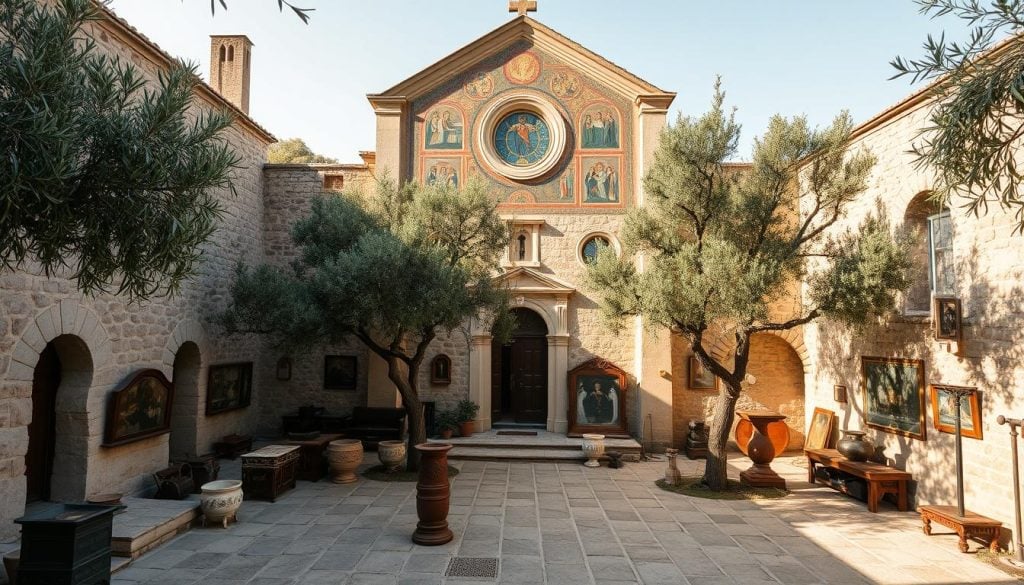
People visiting Nicosia often stop at Phaneromeni Church. It offers a peaceful and spiritual experience. The church shows off the beauty of Orthodox architecture and the strength of the Cypriot community.
Agios Ioannis Cathedral Church
The Agios Ioannis Cathedral Church is a key part of Nicosia’s architecture. It combines beauty with deep historical value. This landmark is not just a place of worship but also a showcase of the area’s rich artistic heritage.
Architectural Features
Renovated in 1662, the church features stunning 18th-century frescoes. These frescoes tell stories from the Bible in vivid detail. The designs and colors show the skill of the time, giving us a glimpse into the culture back then.
The church’s design mixes Baroque and Byzantine styles. Its interior and exterior are both elegant. The natural light inside enhances its beauty, making it a sight to behold.
Historical Significance in Nicosia
This cathedral is central to the Church of Cyprus. It is the main church and a spiritual hub for the community. The Agios Ioannis Cathedral Church has seen many historical moments, making it a key part of Nicosia’s history.
Its importance goes beyond religion. It shows the strength and continuity of Cypriot culture over the years.
The Famagusta Gate
The Famagusta Gate is a key part of Nicosia’s history, built in the 16th century. It was not just for defense but also for trade and communication. Its design shows the city’s rich history, thanks to the Venetians.
Historical Context
The Famagusta Gate was a main entrance to Nicosia, protecting it from invaders. It has changed over time, from a military spot to a cultural center. This change shows its importance in the city’s history.
The Venetians built it, showing their skill in architecture. This skill helped shape Cyprus’s culture.
Current Role as a Cultural Center
Now, the Famagusta Gate is a cultural center in Nicosia. It hosts art events, exhibitions, and community meetings. This new role keeps its history alive while promoting culture.
It attracts both locals and tourists with its creativity and inclusiveness. As a cultural center, it connects the past with today’s art.
The Liberty Monument
The Liberty Monument in Nicosia honors those who bravely fought against British rule. It’s near the historic Venetian walls, adding to the city’s rich history.
This monument is a symbol of freedom. It shows the bravery of fighters and the people’s wish for independence. Its design tells the story of the EOKA struggle, making it a key part of Cyprus’s history.
People who visit the Liberty Monument think deeply about its meaning. It reminds us of the sacrifices made for freedom. It also inspires us to cherish and protect our liberty.
The Liberty Monument is more than a memorial. It’s a place for learning and reflection. Here are some important facts about it:
| Aspect | Description |
|---|---|
| Location | Near the Venetian walls in Nicosia |
| Established | To commemorate the EOKA struggle and its fighters |
| Significance | Acts as an independence symbol for Cypriots |
| Features | Powerful imagery representing resistance and resilience |
| Visitor Experience | Offers an opportunity for reflection and education |
Conclusion
Nicosia’s historical sites give us a peek into the city’s rich history. The Walls of Nicosia and the Phaneromeni Church are just a few examples. Each one adds a special piece to Nicosia’s story.
When you visit these sites, you’ll uncover the city’s deep cultural roots. Every corner of Nicosia holds a piece of history. From the Liberty Monument to the Cyprus Museum, you’ll learn a lot.
Exploring Nicosia’s history is an adventure. It lets you see how the city’s past shapes its present. Don’t miss out on this chance to discover Nicosia’s fascinating past.

































